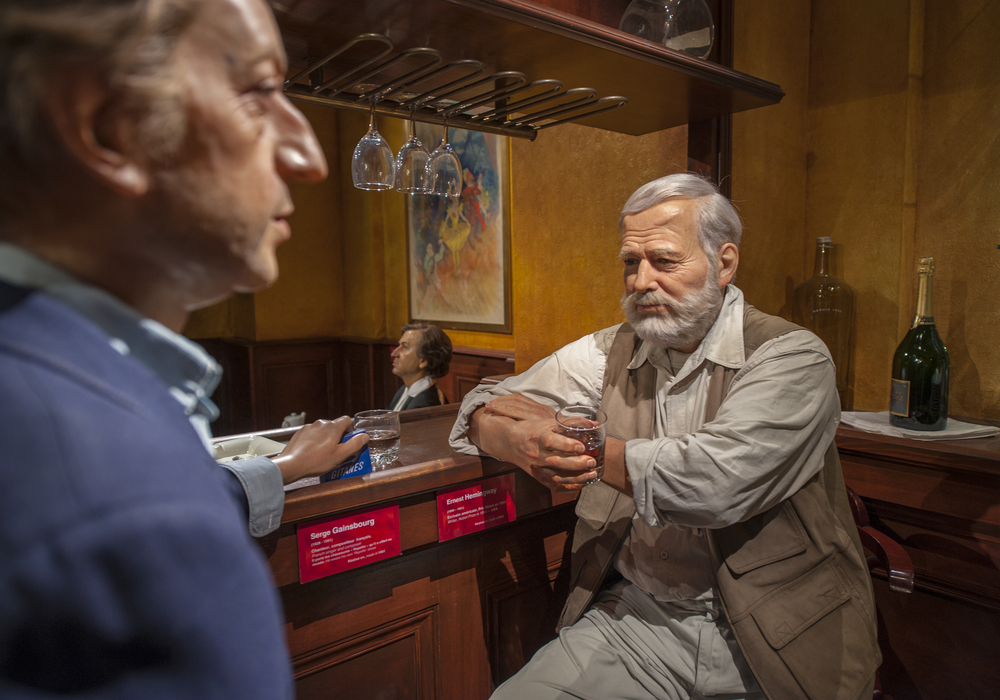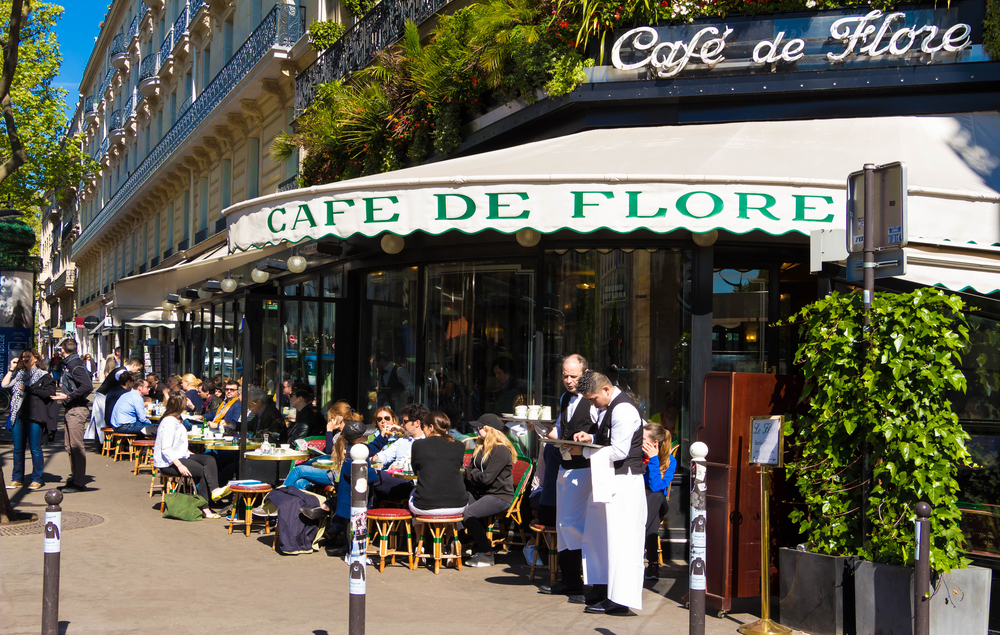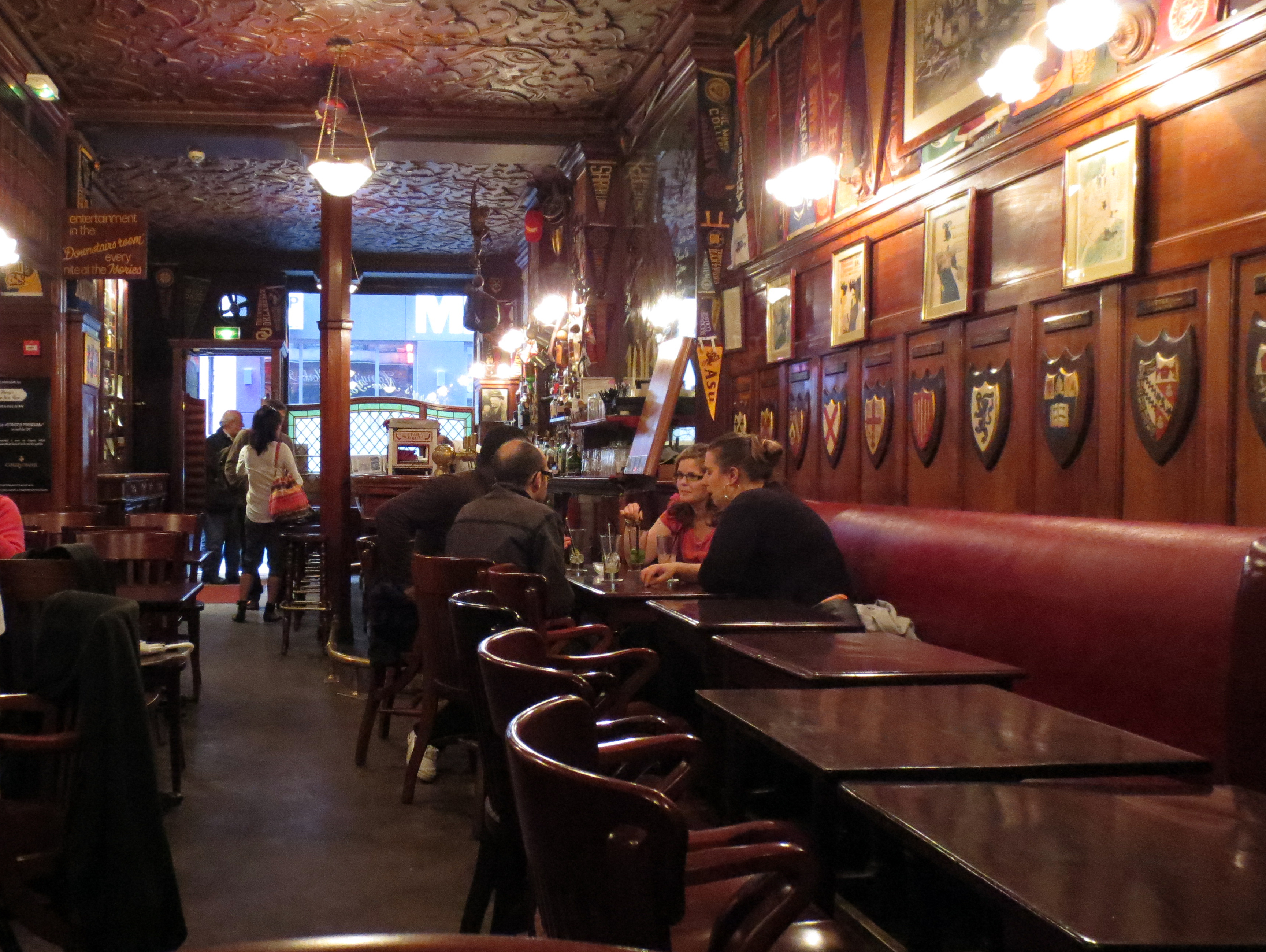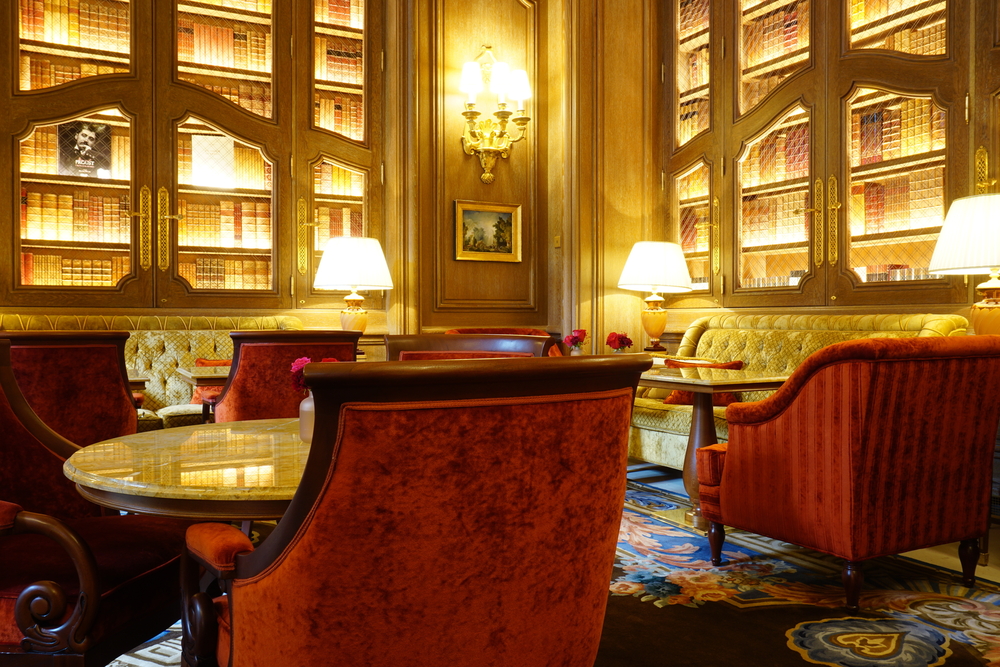Hemingway for a Day

The laissez-faire Parisian culture, where days were spent sprawled in a cafe, maybe alone, but always immersed in the culture and pleasant chatter of others, is the epitome of Paris' image in Ernest Hemingway's The Moveable Feast. Hemingway wrote, “If you are lucky enough to have lived in Paris as a young man, then wherever you go for the rest of your life, it stays with you, for Paris is a moveable feast.” Paris' cafes in the 1920s were a desk and workspace to Left Bank literary artists, where what more can be inspiring than Parisian society and cup of espresso, the eau de vie to get the creative juices going.
Start on the left bank, on Boulevard Saint-Germain, where Café De Flore and Les Deux Magots are juxtaposed. Magots also catered to literary artists such as Simone de Beauvoir, Andre Gide, Jean Giraudoux, Jean Paul Sartre and Picasso. At Flore, if your inner writer flares while dining on a platter of foie gras, there is also a literary competition you might fancy entering. Le Prix de Flore is awarded annually in November by a panel of journalists, in true Hemingway fashion.

Image Credit: Shutterstock/Petr Kovalenkov
Despite the new location, previously at 11 rue Odeon and now located at 37 rue de la Bucherie, grab a book at Shakespeare & Company. Read for a little, and then work off a croissant and café crème with a stroll through the Luxembourg Gardens, where Hemingway walked nearly every day. Hemingway described hunger as a “discipline”, because you “saw and smelled nothing to eat from Vaugirard to the Overvatoire”, and wrote that after the Luxembourg Museum, where he looked at paintings done by Cezanne, he’d head over to Brasserie Lipp and indulge in a liter of beer and pommes à l’huile.
He’d also frequent the Closeries Des Lilas—where they serve a filet de boeuf Hemingway—over Le Dome or La Rotonde, as he ironically said of those two, “In those days many people went to the cafes at the corner of the Boulevard Montparnasse and the Boulevard Raspail to be seen publicly and in a way such places anticipated the columnists as the daily substitutes for immorality.”

Image Credit: Wikimedia Commons
Cross over to the right bank later in the evening, and stop at Harry’s New York Bar, where Hemingway met F. Scott Fitzgerald and where the Bloody Mary is said to have been conceived. Or indulge in a daiquiri, one of Hemingway’s drinks of choice at Le Bristol. Simon Martel, a barman at Le Bristol, explains what makes the Hemingway Daiquiri unique, "[Hemingway] was diabetic, so instead of simple syrup, he would have grapefruit juice." Delicious, nonetheless.
And of course, at prices Hemingway would scoff at, but with an ambience he would hate to love, you’ll of course have to pay a visit to the bar at The Ritz Hemingway Bar. “When I dream of an afterlife in heaven,” Ernest Hemingway once wrote, “the action always takes place at the Ritz Paris.”

Image Credit: Shutterstock/EQRoy
Serving as the Nazi headquarters during their occupation of Paris, Hemingway is said to have driven up to the Ritz with American soldiers and “liberated” the hotel bar, ordering around 50 martinis for all. So grab yourself a martini, as Jean Bertin, who first served Hemingway in 1928, said "Every morning before the races Hemingway never had anything other than a martini, once in a while a scotch."
Hemingway may have idealized Paris in his memoirs and he may have depicted a society that never really existed in its unparalleled world. He even wrote about his novel “This book is fiction and should be read as such," but even romanticized Paris is a world we all live in. A place of alcohol, food, love—tasting whatever it has to offer—there's never a better place to disappear and find solace quite like a terrace in Paris.





